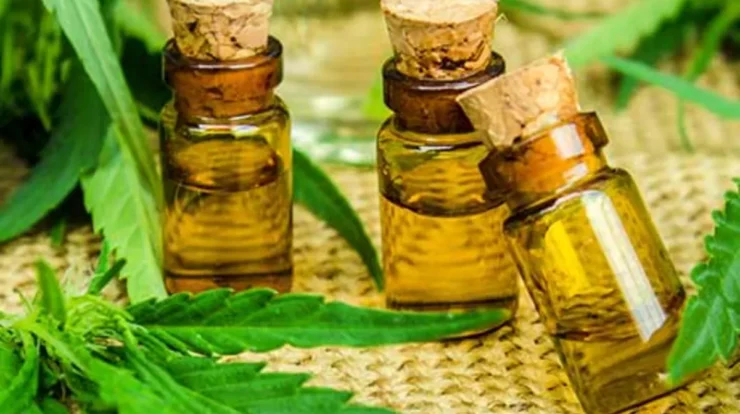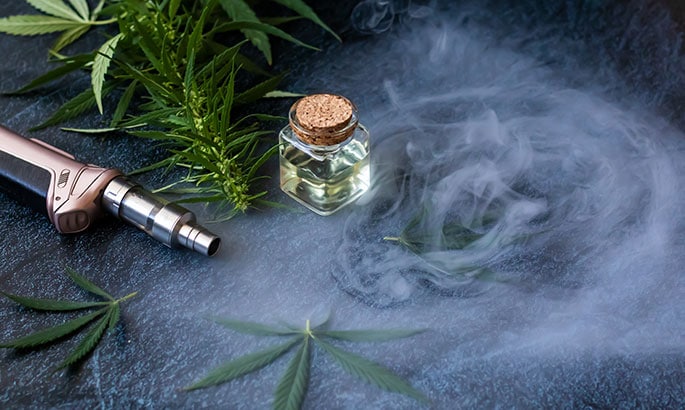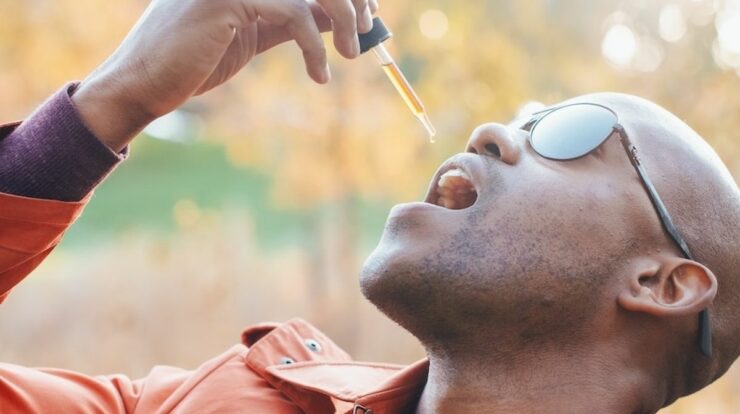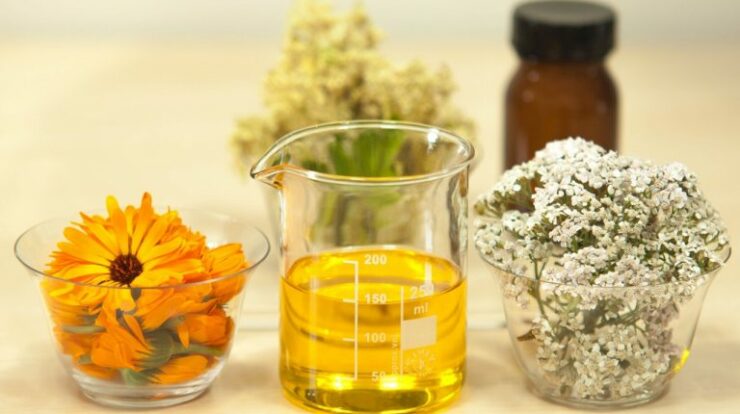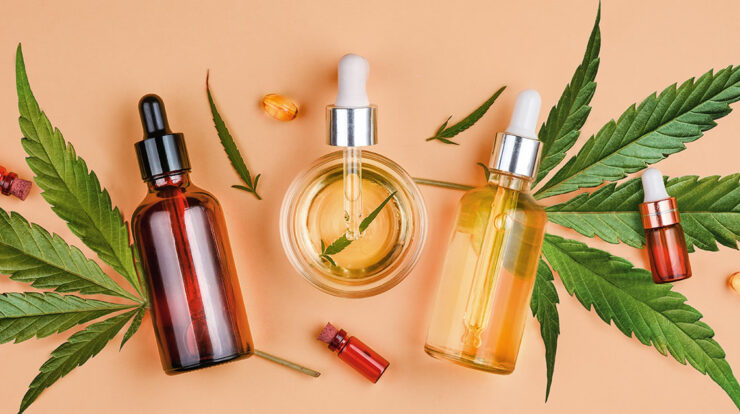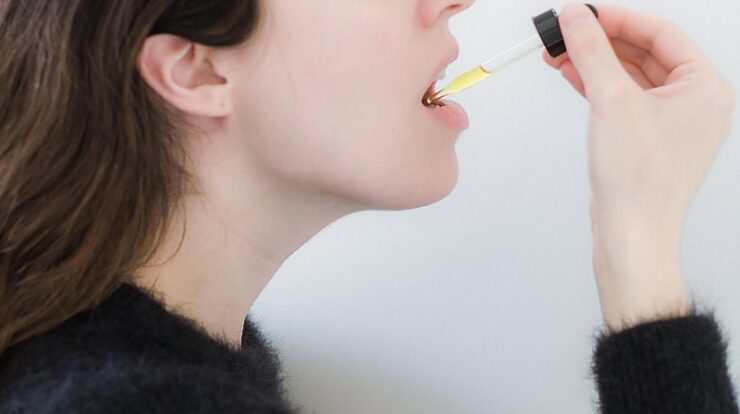
Short answer: there is no ‘correct’ CBD dosage. The optimal dose for a consumer depends on several factors, such as body type, CBD tolerance, and the consumer’s level of pain or discomfort. The type of CBD product and its concentration are other important considerations, since some products interact differently with the body than others.
This guide will look at all of the key considerations to make when determining the proper dosage. We’ll also demonstrate how to measure dosage for different CBD products and discuss some potential health concerns for people who consume large amounts of CBD.
Please note: First-time CBD consumers should consult with their physician before using any products containing CBD.
What is CBD?
Cannabidiol (CBD) is a type of cannabinoid, a natural chemical compound found in cannabis plants that interacts with the endocannabinoid biological system in humans and other mammals. The endocannabinoid system regulates various cognitive and physiological processes – such as mood, sleep, appetite, and pain-sensation – in order to promote homeostasis, or equilibrium in the body. When introduced into the body, CBD and other cannabinoids assist with regulation and homeostasis, which can help alleviate pain, improve sleep quality, increase appetite, and reduce stress.
As a result, CBD may ease symptoms associated with the following conditions:
- Insomnia and other sleep disorders
- Epilepsy
- Nausea
- Anxiety and stress
- Mood disorders
- Chronic pain
- Conditions affecting the immune system, such as cancer or HIV
A common misconception is that CBD makes people feel ‘high’ because it comes from cannabis plants. This is factually incorrect. Another cannabinoid, tetrahydrocannabinol (THC), is responsible for the psychoactive high that occurs when people smoke or consume marijuana. CBD does not produce the same effect.
Additionally, CBD products come from hemp, a type of cannabis plant with relatively low concentrations of THC and higher concentrations of CBD. As a result, most CBD products contain little to no THC. Hemp was decriminalized at the federal level in 2018, and is currently legal to grow, sell, buy, and consume hemp-based CBD products in all 50 states.
It’s also important to note that the long-term effects of CBD have not been extensively studied. Some researchers have pinpointed certain side effects associated with CBD consumption, such as a temporary drop in blood pressure and diarrhea, but most experts agree CBD appears to be reasonably safe. However, everyone should consult with their doctor before trying CBD products for the first time.
Even though CBD products do not produce the same psychoactive high as products with THC, measured doses are recommended. Next we’ll look at some points to consider when choosing the dosage amount.
Important Dosage Considerations
Determining the best CBD dosage generally depends on the following factors.
- Concentration: Concentration, or strength, refers to the total amount of CBD in a given product. Concentration is measured in milligrams (mg). This is different from dosage, which indicates the amount of CBD per serving. For instance, let’s say a bottle of CBD tincture has a concentration of 1500 mg and contains 30 milliliters (mL) of tincture, with 1 mL as the standard serving size. This means each 1-mL serving will contain approximately 50 mg of CBD; the consumer is not ingesting 1500 mg with each dosage.
- Body weight: A person’s weight often plays a role in how much – or how little – CBD affects the body. Generally speaking, heavier people need higher doses to experience the calming effects of CBD; lighter people, on the other hand, may feel the same effects with a lower dose.
- Desired effects: For many, the optimal dose comes down to the level of pain or discomfort they are experiencing. Someone with chronic pain or severe anxiety may need a higher dose to alleviate their symptoms, whereas a person with a milder condition may prefer a lower dose with less pronounced effects.
- Tolerance: CBD consumers may develop a tolerance over time, which can result in reduced effects from the same dosage. Higher subsequent doses may be needed to achieve the desired results.
Using the criteria above, first-time CBD consumers should be able to determine a good starting dosage. Next, we’ll look at some typical starting doses for CBD consumers with different weights and desired effect levels.
Calculating the Best Dosage
The table below breaks down starting doses based on body weight and effect level. These dosages are approximations and highly subjective due to the nature of CBD consumption; always consult your physician about the best starting dose before trying CBD for the first time.
| Weight Group | Recommended Dosage for Mild Effects | Recommended Dosage for Moderate Effects | Recommended Dosage for Strong Effects |
| Light (less than 130 lbs.) | 11 mg or less | 12 mg to 14 mg | 15 mg to 17 mg |
| Medium (130 to 230 lbs.) | 18 mg or less | 19 mg to 23 mg | 24 mg to 27 mg |
| Heavy (more than 230 lbs.) | 23 mg or less | 24 mg to 30 mg | 31 mg to 45 mg |
Stronger doses than those listed may be more suitable for certain CBD consumers. These include people with severe pain or other debilitating symptoms, as well as those with a relatively high CBD tolerance. CBD is not toxic and gradually increasing CBD dosage does not carry any known side effects, so ramping up one’s dosage is generally safe – and, in some cases, beneficial to the consumer. Many find that incrementally increasing the dosage is the best way to achieve the desired effects of CBD.
The type of CBD product is also important to consider, since each one is associated with different concentrations, dosing methods, and effects. The next section will take a closer look at tinctures, topicals, and other CBD product variations.
Measuring Dosage for Different CBD Products
Thanks to a booming CBD market, consumers can choose from several different forms of CBD. These include:
Oils and Tinctures
These forms of concentrated CBD oil are typically mixed in with food or applied sublingually (beneath the tongue). Oils and tinctures typically come in 15-mL or 30-mL bottles. These products vary significantly in terms of concentration, ranging anywhere from 100 mg to 5000 mg. The key to understanding tincture dosage is serving size, which is usually 1 mL per serving. A 5000 mg-strength tincture in a 30-mL bottle features 30 1-mL servings of roughly 166.7mg of CBD. A 100 mg-strength tincture in the same bottle contains 30 servings of roughly 3.3mg of CBD. These two servings will yield very different effects.
For this reason, we urge first-time CBD tincture consumers to start with lower concentrations and gradually ramp up their dosage. It’s important to note that tinctures do not take effect as quickly as other CBD products (namely vape oils) and consumers may not experience the sensations right away; however, the effects can last for up to three or four hours. Those who take the tincture sublingually should hold the 1-ml serving under their tongue for approximately 60 seconds for best results.
High Potency Oil Recommendations
NuLeaf Naturals
NuLeaf Naturals is a Editor’s Pick for high-potency CBD products. Their CBD oil tinctures are the most heavily reviewed than any other brand in the industry. Those reviews offer comprehensive consumer feedback and data in an industry that is otherwise not well-regulated.
NuLeaf Naturals offers products with varying concentrations, from 240 mg to 4,850 mg, all of which contain a full spectrum of synergistic cannabinoids and terpenes. Their products are 100% organic and chemical free. They also offer a full-spectrum CBD pet oil tincture. High potency users who value CBD oil with no added ingredients will appreciate NuLeaf Naturals’ dedication to zero-additive CBD oil. They also offer fast, free shipping to all 50 states.
Sabaidee
Sabaidee’s Mega Good Vibes is another excellent high-potency CBD oil formulated for strong therapeutic relief. Each 30mL bottle of Sabaidee’s Mega Good Vibes CBD oil contains 2,500 mg of CBD and less than 0.3% THC from full-spectrum hemp oil extract. At 88.33 mg of CBD per 1mL serving, this is one of the most potent CBD oils that we have found. Although this is a high-potency option, it is still quite affordable at $0.08 per mg of CBD.
We also appreciate that Sabaidee does not scrimp on quality for the sake of quantity. The company’s high potency CBD oil is made in America and contains 100% natural, plant-based ingredients including MCT oil from coconuts, peppermint oil, and stevia leaf extract. Sabaidee uses organically grown hemp from Colorado. And all of Sabaidee’s CBD oil undergoes quality testing in-house and by an indpendent, third-party laboratory.
Low Potency Oil Recommendations
FAB CBD
FAB CBD’s 300mg CBD Oils are great for a wide range of CBD users, particularly first-time buyers and individuals who don’t much like the taste of hemp. The tinctures come in a variety of flavors, including a Natural flavor, as well as Mint, Citrus, Berry, and Vanilla. Stronger concentrations are available in all the same flavors if your potency needs change over time. FAB CBD’s products are all third-party tested, with lab results available for each product in a dedicated section of their website.
FAB CBD’s tinctures are made using a full-spectrum extraction process that captures a blend of cannabinoids and terpenes. The ingredients are straightforward: just CBD, MCT oil, and natural flavors depending on the variety. FAB CBD derives the CBD for their tinctures from non-GMO, pesticide-free industrial hemp that is grown in Colorado. Their products ship to the US as well as internationally, with free shipping available on domestic orders of $89 or more.
Medterra CBD
Medterra’s 500mg CBD Oil tinctures are a great choice for users who value purity in CBD concentration and legal compliance. All of their products are Made in the USA, are third-party tested, fully compliant under the Kentucky Department of Agricultural Hemp Pilot Program, and certified by the U.S. Hemp Authority.
Medterra uses a whole-plant, CO2 extraction process. This separates CBD and plant matter and filters out unwanted elements. The process maximizes purity in the CBD concentration. The tinctures are made with 99% CBD and MCT coconut oil. All of their plants are non-GMO, pesticide-free, and THC-free. Shipping is available to all 50 states and most international countries.
CBDistillery
CBDistillery offers another high-quality option for low-dosage CBD oil but at a more affordable price point. A 30mL bottle of 250mg costs $19.99.
Their products are sourced from non-GMO, U.S.-grown industrial hemp using natural farming practices. Extracted from aerial plant parts, they have both isolate and full spectrum CBD products.
Vape Oil
Vape oil is CBD oil extracted from hemp that is formulated with a cutting agent, such as vegetable glycerine or propylene glycol. Vape oil is inhaled using a vape pen. The effects are almost instantaneous, and produce a relaxing sensation for up to an hour or so – though the duration of these effects typically depends on how long the consumer inhales from the pen and how long they hold the vapor in before exhaling. Many find that inhaling for up to three seconds and holding the vapor in for up to five seconds will produce the strongest, longest-lasting effects.
In terms of concentration, vape oils are similar to tinctures. Most vape oils come in 30-mL bottles, with 1-mL to 1.5-mL per serving. Concentrations for vape oils typically range from 200 mg to 1500 mg, meaning that the serving size for most oils will range from 6.6mg to 50 mg. Many vape pens are designed to accommodate cartridges that house the vape oil; cartridges vary in terms of capacity but 1.5 mL is a common size.
Edibles
CBD edibles include capsules, gummies, and other products that are eaten. Like tinctures, edibles have a longer onset time because they are ingested orally, but the effects are also much more prolonged. Typically, edibles will take effect within one hour of consumption; the effects will last for up to four or five hours, depending on the strength.
Calculating dosage is fairly easy with these products because each edible represents one serving size and the dosage is always listed in the ingredients. Most gummies have concentrations ranging from 5 mg to 100 mg. For higher-dosage edibles, consumers who prefer moderate doses find that breaking the edible apart yields the best results.
Topicals
CBD topicals include lotions and creams, balms and salves, therapeutic oils, and other products that are applied directly to the epidermis, or outermost layer of skin. Topicals are unique, in that the substance never comes in direct contact with the body’s endocannabinoid system; rather, the cannabinoids in CBD topicals bind with cannabinoid receptors in the epidermis. The result is a soothing sensation that is mostly isolated to the application area. People may use CBD topicals to relieve muscle or joint pain, or alleviate discomfort from burns, stings, and other injuries. Many topicals also contain antioxidants and moisturizers that can restore and replenish the skin.
Calculating dosage with topicals is tricky because the ‘serving’ size depends entirely on how much (or how little) is applied to the skin. Most CBD topicals sold today range in concentration from 250 mg to 1500 mg. People with severe pain or discomfort typically find that high-concentration topicals work best.
The table below summarizes typical dosing methods and amounts for the CBD products detailed above.
| CBD Product | Dosing Method | Serving Size | Typical Concentration Range | Typical Dosage per Serving |
| Tincture | Sublingually using a dropper or mixed in with food/drinks | 1 mL | 100 mg to 5000 mg | 3.3mg to 166.67mg |
| Vape Oil | Inhaled using a vape pen | 1 mL to 1.5 mL | 200 mg to 1500 mg | 6.6mg to 50 mg Varies by inhalation method |
| Edible | Ingested orally | 1 edible | 5 mg to 100 mg | 5 mg to 100 mg |
| Topical | Applied to the epidermis | Varies by application preference | 250 mg to 1500 mg | Varies by application preference |
Can You Overdose on CBD?
CBD is considered non-toxic and the chemical produces very few side effects which, when they occur, are typically minor and non-threatening. Furthermore, a recent report by the National Cancer Institute – a branch of the National Institutes of Health (NIH) – notes that overdosing on CBD is virtually impossible, and the same is true of THC and marijuana. Per the report: “Because cannabinoid receptors, unlike opioid receptors, are not located in the brainstem areas controlling respiration, lethal overdoses from Cannabis and cannabinoids do not occur.”
The report also goes on to note that cannabinoids are considered much less addictive than other drugs, including prescription medications – though CBD consumers do develop a tolerance over time. CBD withdrawal symptoms may include insomnia, hot flashes, and nausea, but these symptoms are mild compared to withdrawal symptoms from other addictive substances.
That being said, CBD products are relatively new to the market and have not been extensively studied in terms of long-term health effects. It’s also important to note that consumers should only purchase and use CBD products from brands that submit their products to third-party testing organizations and publish the results of these tests online (typically on their website). A 2018 report from the Centers of Disease Control (CDC) noted a spike in adverse reactions from CBD consumers in the state of Utah. A total of 52 cases were investigated. In many cases, the adverse reactions were linked to synthetically produced CBD products and/or products from brands that did not disclose ingredients or manufacturer information.
CBD consumers can protect themselves by only purchasing products from brands that provide third-party testing results, product ingredients, and information about the manufacturing process. We also urge consumers to refrain from using CBD products with synthetic components, as these have been linked to more cases of adverse effects; all-natural CBD products are widely available.

